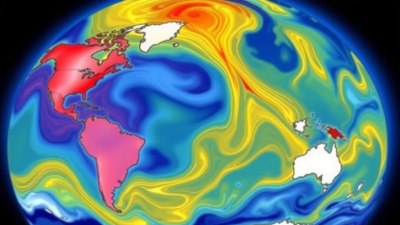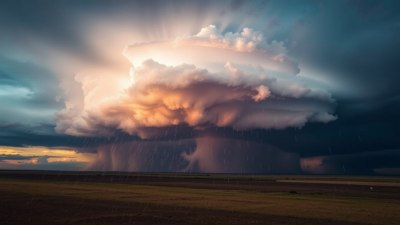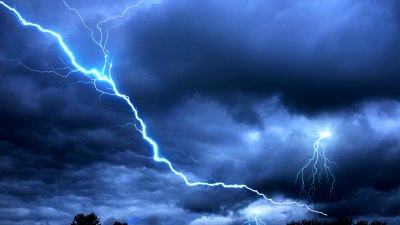The Role of Cloud Cover in Nighttime Cooling
Explore how cloud cover impacts nighttime cooling and its significance in climate science.

Nighttime cooling is a critical aspect of the earth's climate system, influencing temperature variations, ecology, and human activities. Clouds play a significant role in this process. Understanding the dynamics of cloud cover can help scientists predict weather patterns, climate change, and ecological health. This article aims to clarify the role of cloud cover in nighttime cooling and its broader implications.
What is Nighttime Cooling?
Nighttime cooling refers to the drop in temperature that occurs after sunset. The earth’s surface loses heat rapidly, particularly in clear conditions where longwave radiation escapes into space. Several factors influence nighttime cooling, including atmospheric conditions, humidity levels, and the presence of clouds.
The Physics of Cloud Cover
Clouds are composed of tiny water droplets or ice crystals suspended in the atmosphere. They form when air cools and condenses moisture. The type and thickness of clouds significantly impact their insulating properties. In the absence of clouds, heat emitted from the earth can escape freely, leading to rapid cooling. However, clouds can act as a blanket, trapping some of this heat and reducing the degree of cooling.
Types of Clouds and Their Effects
Different types of clouds influence nighttime temperatures differently. Thick clouds, such as cumulonimbus, tend to trap more heat than thin, wispy clouds like cirrus. Low-lying stratus clouds can create stable conditions that minimize cooling, while high-altitude clouds can have varying effects depending on their density and thickness.
Mechanisms of Heat Retention
The primary mechanism by which clouds affect nighttime cooling is through radiative heat retention. The presence of clouds can absorb infrared radiation emitted from the earth's surface and reradiate some of this energy back toward the ground. This process can mitigate the drop in nighttime temperatures significantly. The effectiveness of clouds in this regard depends on their altitude, thickness, and water content.
The Role of Humidity
Humidity is another crucial factor in the interplay between clouds and nighttime cooling. High humidity levels generally correlate with more cloud cover, which enhances their heat-retaining effect. In contrast, dry air allows for increased radiative cooling. Regions with high humidity often experience milder temperature fluctuations between day and night due to the moderating influence of clouds.
Geographical Variations
The geographical location can greatly influence the impact of cloud cover on nighttime cooling. Coastal areas, for instance, may experience more cloud cover due to the prevalence of moist air from the ocean, leading to less pronounced temperature drops than inland regions. Urban areas may also show unique patterns as buildings and infrastructure can affect local atmospheric conditions.
This Interaction in Different Climates
Climate zones demonstrate varying cloud effects on nighttime cooling. For instance, tropical regions, where humidity is often high, may experience less nighttime cooling due to persistent cloud cover, while arid desert regions with clear skies witness significant temperature drops. Understanding these patterns is crucial for climate scientists monitoring changes due to global warming.
The Role of Climate Change
Climate change is altering cloud cover patterns globally. Warmer temperatures can lead to increased evaporation, impacting cloud formation and duration. This change can subsequently affect nighttime cooling, as altered cloud cover can lead to either excessive warming in some regions or heightened cooling in others. Detecting these trends is essential for future climate models.
Implications for Agriculture
The effect of cloud cover on nighttime cooling has direct implications for agriculture. Crops depend on temperature variations for growth, with excessive cooling potentially freezing sensitive plants and insufficient cooling leading to heat stress. Farmers can leverage weather forecasts, including cloud cover predictions, to optimize planting and harvesting times.
Urban Heat Islands
Urban areas often create heat islands—regions that experience significantly higher temperatures than their rural surroundings. Cloud cover in these areas may act differently due to anthropogenic influences like pollution, which can enhance cloud formation and alter heat retention dynamics. These urban environments often have limited nighttime cooling, contributing to the heat island effect.
Monitoring and Forecasting Tools
Advancements in satellite technology allow us to monitor cloud cover and its effects on nighttime cooling more effectively. Remote sensing tools can track cloud types, their heights, and coverage, yielding insights into local and regional climate dynamics. These monitoring efforts are important for predicting weather patterns and will become increasingly vital as climate change progresses.
The Link to Local Weather
Cloud cover plays an instrumental role in determining local weather conditions. For instance, weather forecasts often include cloud cover percentages, which can inform expected temperature ranges. By analyzing historical data on cloud cover and temperature fluctuations, meteorologists can better predict upcoming weather patterns, aiding both public safety and economic planning.
Future Research Directions
Future research should focus on understanding cloud cover's nuanced role in nighttime cooling and its implications for climate variability. Investigations into the interactions between clouds, aerosols, and greenhouse gases may yield essential insights into climate feedback mechanisms. Furthermore, understanding the socio-economic implications of these changes will be crucial for adapting to our rapidly changing climate.
Cloud cover plays a pivotal role in regulating nighttime cooling, impacting various sectors, from agriculture to urban planning. As we face the challenges of climate change, understanding clouds' dynamics becomes increasingly important for making informed decisions about sustainability and environmental management. Future studies will be crucial in unraveling the complexities surrounding cloud cover and its effects on our planet's climate.











